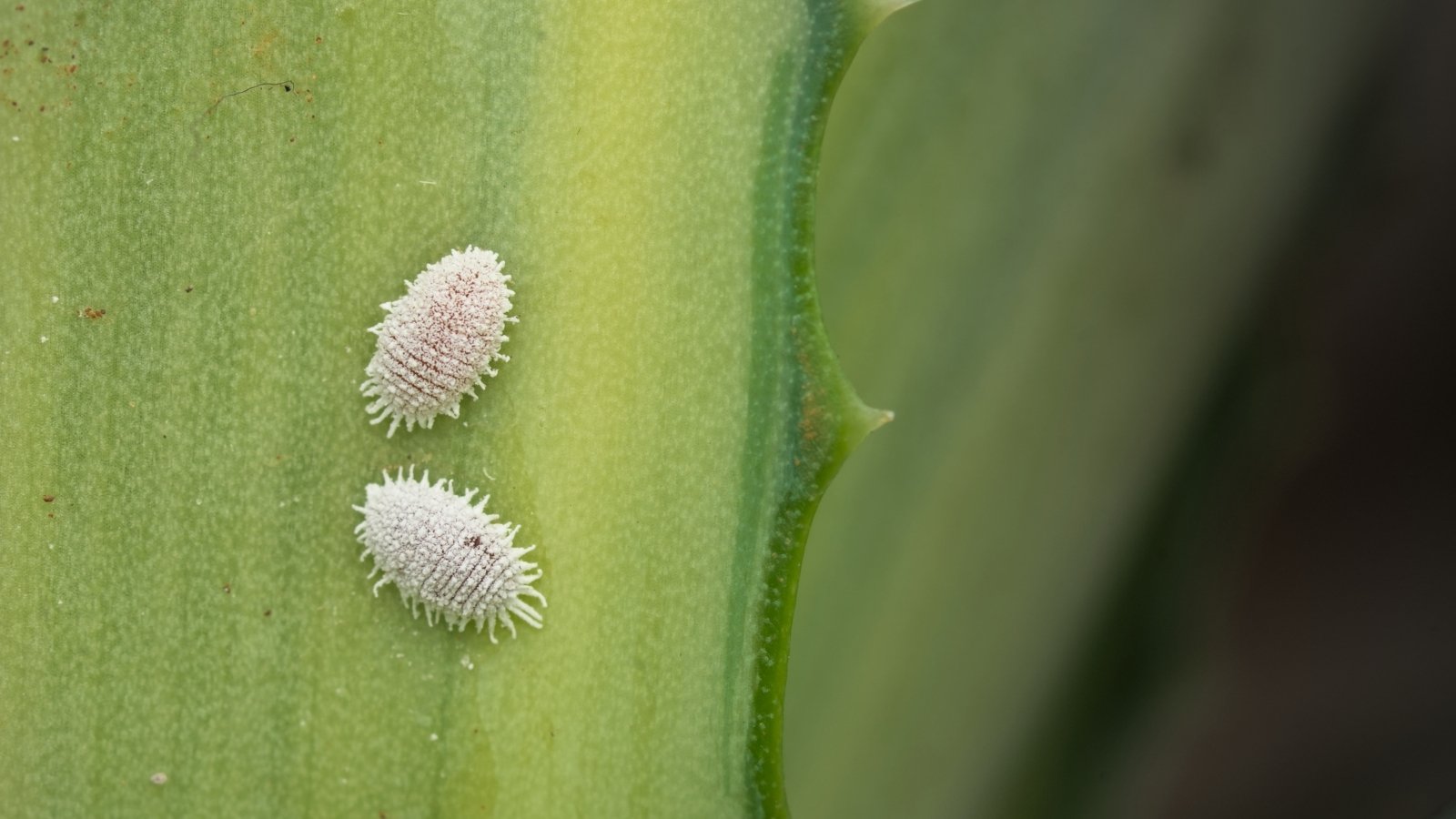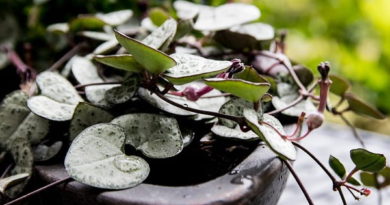How to Plant, Grow, and Care for Dancing Bones Cactus
I’m always fascinated by the common names of plants, which range from the cute (hens and chicks) to the dramatic (bleeding heart) to the just plain weird (beardtongue??). We can certainly add dancing bones cactus to that list as well!
Botanically referred to as Hatiora salicornioides, (previously Rhipsalis salicornioides), dancing bones cactus is a shrubby member of the Cactaceae family. And, if “dancing bones cactus” wasn’t whimsical enough, this plant is known by several other fun common names including drunkard’s dream, dancing bones, spice cactus, and bottle cactus. All of these are in reference to this plant’s knobby, bottle-shaped stems.
Gardeners in our warmest growing zones can tend this jungle cactus outdoors year-round, as it is hardy in USDA zones 9-11. However, this species is most widely cultivated as a houseplant. It seems to be one of those plants that everyone has, but nobody seems to remember how it got there; folks have “just always had it”! Well, it’s time to put a face to this aptly-named plant. Read on and learn how to grow dancing bones cactus.
Hatiora salicornioides ‘Dancing Bones Cactus’ Overview


|
|
|
What Is It?


Along with distant cousins Easter cactus and Christmas cactus, dancing bones cactus is an epiphytic jungle cactus. Unlike desert cacti, which prefer hot and dry conditions, jungle cacti are adapted to the high humidity of high-elevation cloud forests.
This plant is an epiphyte. Epiphytes are simply plants that grow on other plants (usually trees). Epiphytic plants absorb moisture from the air while obtaining nutrients from the leaf litter and organic matter that tends to collect in the nooks and crannies of tree branches. Epiphytes are not parasites, and they do not damage their host plant; the tree trunks and branches that epiphytic plants anchor themselves to simply provide structure.
Characteristics


This species has a unique and semi-unpredictable growth habit. Its bushy, dense form is loaded with branching, bottle-shaped stems. The segmented stems grow wildly and, when grown in optimal conditions, arch downward. Although often sold in commercial nurseries as a small potted plant standing just a few inches tall, mature plants can boast stems up to 3 feet long!
Young stems will produce tubular, golden yellow flowers in the late winter or early spring. This species is a short-day plant, meaning it flowers after receiving long stretches of uninterrupted darkness, typically at least 12 hours.
Native Area


This fascinating little plant is native to southeastern Brazil, where it is found tucked in high-elevation forests and grasslands situated 600-5,700 feet (200-1,750 meters) above average sea level. Although they grow mostly on tree trunks (epiphytes), dancing bones cacti are sometimes found anchored to rocky cliffs as well (lithophytes).
Planting


This is an excellent container plant. Young plants are bushy and grow mostly upright. As the plant matures, its unruly, segmented stems will lengthen and cascade downward, making it well-suited for either a tall pot or a hanging basket.
How to Grow


Dancing bones cactus is a low-maintenance, easy-to-grow plant. Provided it is kept in freely draining soil with no risk of cold temperatures, this plant will reward you with charming yellow flowers and tons of funky stems.
Light


Bright, indirect sunlight, mimicking the dappled light that streams through the rainforest canopy, works best for this plant. Place it in a southern or western-facing room if it lives indoors. Plants grown outdoors should receive protection from strong, direct afternoon sun; situate your dancing bones cactus near a protective porch roof or tree so the stems don’t scorch.
Water


Unlike a true desert cactus, which can get by with very little water, this species is not entirely drought-proof. Water when the top inch or so of soil feels dry to the touch. This plant is not shy about letting you know if it needs more water; the succulent, bottle-shaped stems are quick to shrivel if this plant is left too dry.
Soil


Plant in loose, very quick-draining soil. Remember, this is an epiphyte and has evolved to grow in the humid, airy conditions found in tropical tree canopies. This plant grows best in a “chunky” soil that has plenty of air pockets. It is highly susceptible to root rot if planted in dense, compacted soil. Plant it in a specialty cactus and succulent soil, or, create your own planting media with a 1:1 mixture of potting soil to pumice, tree bark, or perlite.
Temperature and Humidity


Although they have the word “cactus” in their name, this peculiar little plant prefers high humidity. Place it in a steamy bathroom or mist the plant regularly, especially during winter months when you have the heat or woodstove cranked up.
Gardeners in the warmest climates (USDA zones 9-11) can keep dancing bones cactus outside year-round. However, this plant is largely grown as a houseplant. This species is not cold-hardy. Keep indoor-grown plants away from drafty doors and windows during the winter, and be sure to keep the room at least 50°F (10°C).
Fertilizing


Dancing bones cacti are not overly heavy feeders, although they will benefit from a monthly application of fertilizer during the growing season (summer and fall). Put fertilizing on pause during the winter months. Use a balanced 10-10-10 fertilizer or a low nitrogen, 2-4-8 fertilizer diluted to half strength. Too much nitrogen has been shown to negatively impact epiphytic cacti.
Propagation


These cacti can be grown from seed or propagated via cuttings. Neither are complicated, however, taking cuttings is generally regarded as the fastest and simplest way to start new plants.
Cuttings


Dancing bones cactus can be propagated easily through cuttings that root (almost) immediately in soil.
- Choose a healthy, mature stem from your plant and make a cut just below a segment. The cutting should be a few inches long.
- Allow the cutting to harden for a day or two. This helps to seal off the open “wound” on the cutting and prevent rot from taking over.
- Plant the cutting in fresh potting soil. Be sure to use a cacti and succulent potting mix that allows for plenty of drainage.
- Place the new cutting in bright, indirect light, and keep the soil moist until new roots emerge.
Growing From Seed


It is possible to grow this species from seed, however, you’ll need to be patient. Cacti are notoriously slow-growing and it may take weeks or months for seeds to germinate.
- Soak your seeds in lukewarm water overnight before sowing.
- Fill a tray with moistened seed starting mix, ensuring it has proper drainage holes at the bottom to prevent waterlogged soils. Leave a small gap at the top for covering later.
- Evenly sprinkle the seeds in the tray, ensuring they are not too crowded. They need space to grow once they germinate.
- Lightly cover the seeds with a thin layer of vermiculite and place the tray in a warm area with bright, indirect sunlight. You may want to place a heat mat underneath to increase the warmth.
- Place a clear lid or plastic wrap across the surface of the tray to maintain adequate humidity. Mist the soil surface every few days if you notice the seed starting mix drying out.
These related cacti offer similar aesthetics and growth.
Schlumbergera lutea


Like its relative, this plant has bright yellow flowers and wildly branching, succulent-like stems. It was called Hatiora epiphylloides, but recent molecular analyses have closely related to Schlumbergera, and so this plant is now classified as Schlumbergera lutea. This plant is also native to the humid, high-elevation forests of southeastern Brazil.
Hatiora herminiae
Similar to dancing bones cactus, this epiphytic cactus has cylindrical, segmented stems that branch profusely. Brilliant pink to magenta flowers bloom in early spring. The flowers are self-fertile, and plants develop pale green pods after flowering. This species is quite rare and has been listed as endangered due to over-collection of its beautiful flowers.
Common Problems


Very few diseases plague this hardy, low-maintenance cactus. However, environmental problems and occasional pests can impact it. Know how to troubleshoot this plant!
Overwatering


One of the most common issues afflicting all cacti is overwatering. Too much water or compacted, heavy soil can lead to root rot, which can quickly kill a plant. Mushy, yellow-brown stems are a sign that your specimen is suffering from root rot. If only a small part of the plant appears infected, take a few healthy cuttings and pot them up in fresh potting mix. As always, ensure your container has drainage holes on the bottom.
Low Humidity


Although this plant does not tolerate consistently wet roots, it does appreciate very humid air. As a type of jungle cactus adapted to high humidity, this species will quickly shrivel or pucker in overly dry air. Place this cactus in a room with naturally high humidity (i.e. a bathroom), or consider setting up a humidifier. If necessary, mist this plant regularly.
Pests
A few bugs go after this houseplant.
Mealybugs


Mealybugs are frequent greenhouse guests, as they like the warmth and humidity. As such, they arrive in many homes via commercially-grown houseplants, including dancing bones cacti. Mealybugs are especially attracted to succulents, feeding on the plump, sap-filled leaves and stems. Removal starts with removing bugs from leaves and stems with a cotton swab soaked in low-percentage alcohol. Follow up with an application of neem oil, which will suffocate the remaining insects and their eggs.
Aphids


Aphids are another potential pest to plague dancing bones cacti. Like mealybugs, they feed on the tender sap-filled leaves. Aphids produce a sticky honeydew-like substance as they feed, which goes on to attract ants and encourage mold. Remove aphids from your dancing bones cactus by spraying plants with a steady stream of water. The gentle water pressure should help blast insects from the leaves and stems. Follow the water up with an application of neem oil or a 70% solution of rubbing alcohol.
Frequently Asked Questions
Like other jungle cacti in the same family, dancing bones cactus is non-toxic to cats and dogs. As always, however, it’s recommended that all houseplants be kept out of the reach of pets and children.
Dancing bones cactus is only hardy in USDA zones 9-11. Gardeners in colder climates can move their dancing bones cactus outside during the warm summer months however this jungle cactus will need to be back inside if temperatures drop below 50°F (10°C). This plant is not frost-tolerant.
As an epiphyte, dancing bones cactus is naturally found growing in the nooks of trees where its roots are exposed to plenty of humid, tropical air. Very, very rarely is it found growing directly in the ground. It will not grow well in dense, compacted garden soil. Your best bet is to plant it in a container filled with loose, well-drained soil.




